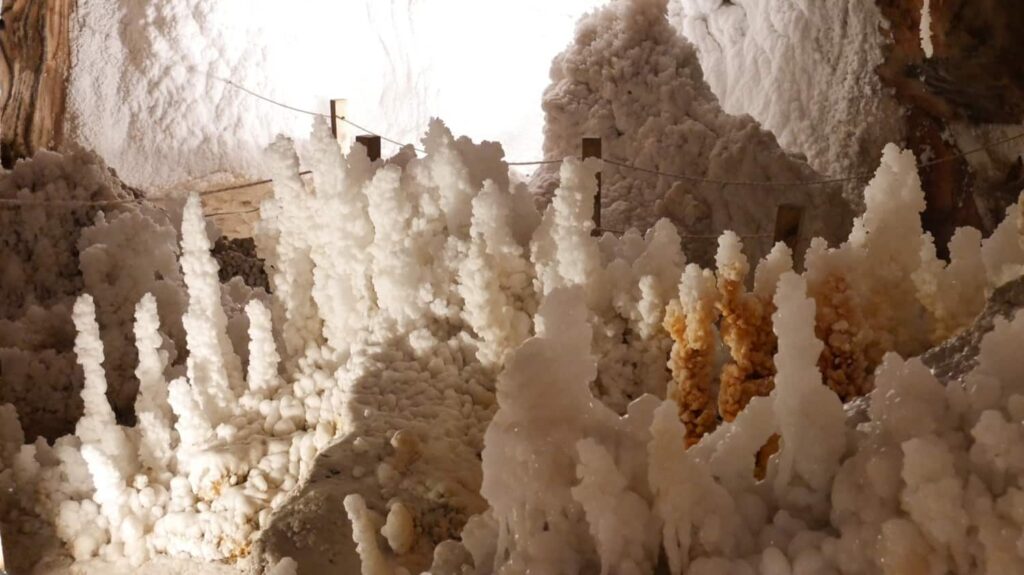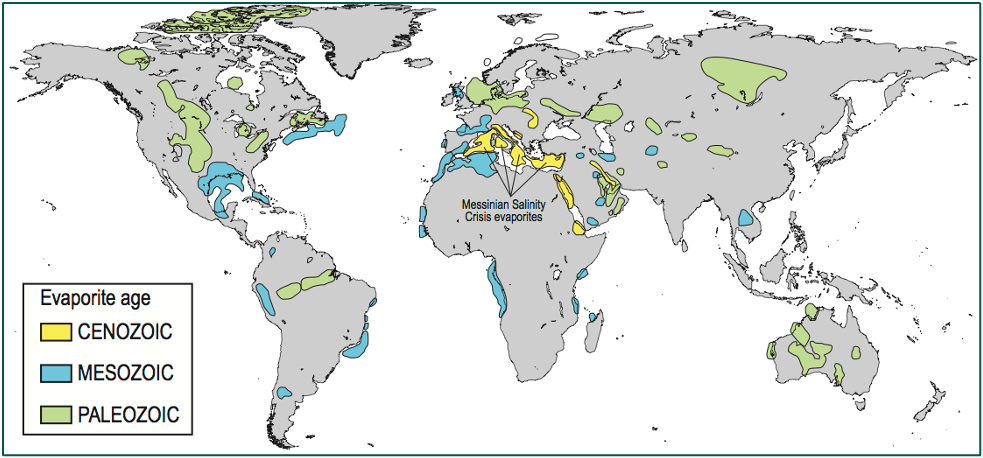
GETTING SALTY IN THE MEDITERRANEAN
Expedition 401 is headed its way to its first drilling site off the coast of Portugal. During the 5-day transit from Amsterdam, Netherlands the science party is working on studying background information for the cruise. This expedition focuses on Messinian Salinity Crisis evaporites, aka the salt giant, that formed millions of years ago in the Mediterranean Sea.
What the heck is a salt giant?
Salt giants are made of huge salty rocks known as evaporites. The salt comes from seawater as the water evaporates. When part of the ocean separates from the rest of world’s oceans, the water in the isolated area can begin to evaporate and leave salt deposits behind. These deposits then form a large salt mass that we call a salt giant. The salt giant found in the Mediterranean Sea is made of mostly halite, the same salt you would find at the dinner table!
How’d it get there?
The salt giant found in the Mediterranean Sea was created after two gateways, one in southern Spain and one in Morocco, between the Mediterranean and Atlantic grew narrower and narrower until they closed. This blocked the exchange. As a result, the Mediterranean sea level fell by hundreds of meters and the water became so salty that a layer of salt crystals more than 1,500 meters thick formed across its seafloor.
Why is this one so different?
Despite happening millions of years ago, the Messinian Salinity Crisis (MSC) is special because it produced one of the youngest of Earth’s salt giants. The salt giant Expedition 401 is looking at comes from the Cenozoic Era or “New Times” in Greek. The Paleozoic Era or “Old Times” and Mesozoic Era or “Middle Times” are significantly older! Salt giants from the Paleozoic Era formed more than 560 million years ago, and the salt giant from the Mediterranean Sea formed about 6 million years ago. To our 4.6-billion-year-old Earth, the MSC was just yesterday.

Wait, but why is water there now?
The Mediterranean today survives thanks to a new connection with the Atlantic Ocean. Although the two previous gateways closed, a new one opened. Around 5.5 million years ago, scientists believe that a cataclysmic flood reconnected the Atlantic with the Mediterranean Sea, terminating salt giant formation and transforming the Mediterranean into what we see today.
Okay, but why do I care?
These events in the Mediterranean impacted global climate by changing both the chemistry of the global ocean and the patterns of how the water moves around the world. This is called thermohaline circulation. Thermohaline circulation is controlled by the temperature (thermo) and salinity (haline) of different water bodies. Water flowing out of the Mediterranean during formation of a salt giant it was much more salty than normal seawater. These changes occurred during an episode of planetary cooling. By having a better understanding of what happened during the MSC, we also get a better understanding of how our climate behaves.
Source: Onboard Scientist, Fadl Raad
Featured Image from: SaltGiant-etn.com